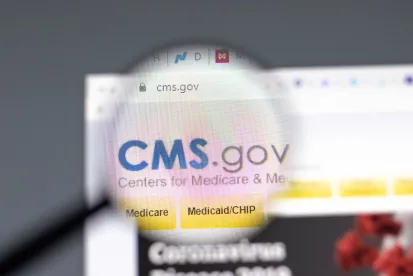Effective March 1st, certain providers choosing to self-disclose Stark Law violations must use forms updated by the Centers for Medicare & Medicaid Services (“CMS”).
Stark Law – Overview
The Stark Law prohibits a physician from referring a Medicare beneficiary for designated health services to an entity with which the physician (or the physician’s immediate family member) has a financial relationship, unless an exception applies. See 42 U.S.C. § 1395nn. Providers who are aware that they have violated the Stark Law at any point within the most recent six-year period may self-report violations in accordance with CMS’s self-referral disclosure protocol (“SRDP”). See 42 C.F.R. § 1003.140; 42 C.F.R. § 401.305(f). Once CMS acknowledges receipt of a provider’s SRDP submission, the provider’s obligation to report and return overpayments within 60 days is suspended. See id. at § 401.305(b)(2)(ii).
New/Revised SRDP Forms
CMS has revised certain SRDP forms to streamline parts of the self-disclosure process.
1. Group Practice Information Form – New. CMS has developed a new Group Practice Information Form that enables a group practice, as a whole, to identify which elements of the group practice definitional requirements under 42 C.F.R. § 411.352 it failed to satisfy. (The exception for in-office ancillary services does not apply to DHS referred within and performed by a physician practice that does not fully satisfy the Stark Law’s definition of a ‘group practice’.) The form also requires the submission of an Excel spreadsheet that includes the following information for each physician who made prohibited referrals during the applicable lookback period:
-
Name and NPI
-
Statement of whether the referring physician is an owner, employee, or independent contractor of the practice
-
Statement of whether the referring physician received compensation that failed to comply with the group practice requirements under the Stark Law
-
Period of non-compliance
Use of this single form replaces the prior requirement that each physician of the practice submit a separate Physician Information Form. However, the Group Practice Information Form should not be used when a practice satisfies all group practice definitional requirements, but its DHS fails to meet the requirements of an exception codified at 42 C.F.R. § 411.355 (including the exception for physician services at § 411.355(a) and the exception for in-office ancillary services at § 411.355(b)). In such cases, separate Physician Information Forms should be completed and submitted for each referring physician, consistent with historical practice.
2. Physician Information Form – Revised. If an arrangement does not satisfy a Stark Law exception and the referring physicians stand in the shoes of their physician organization (per 42 C.F.R. §§ 411.354(c)(1) or 411.354(c)(2)), then in lieu of submitting a Physician Information Form for each such physician, a single Physician Information Form may be submitted so long as it contains a separate listing of (i) the names and NPIs of each ‘shoe-standing’ physician, i.e., of each physician deemed to have the same non-compliant compensation arrangement with the DHS entity as his or her physician organization, (ii) the period(s) of non-compliance for each such physician, and (iii) other relevant information (e.g., if one of the physicians redeemed her equity in the physician organization on a certain date, terminating her ‘shoe-standing’ status as of such date).
3. Signed Certification – Revised. The signed certification may now be submitted electronically without the need to mail a separate hard copy of the signed certification to CMS. Therefore, all documents in connection with the SRDP can be submitted electronically by email to 1877SRDP@cms.hhs.gov.
In sum, certain parts of the SRDP process are more streamlined by enabling physician practices to submit a single form in lieu of multiple and nearly identical forms, and by permitting electronic submissions without a hard copy mailed separately.
Lotan Helfman, a law clerk in SheppardMullin's Washington D.C. office, also authored this article.


 />i
/>i
